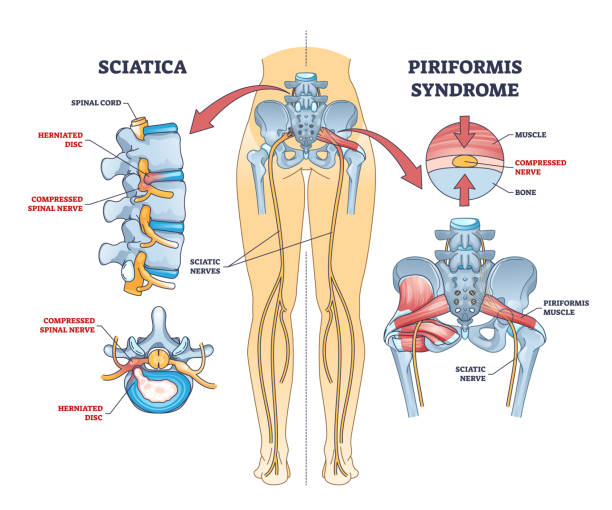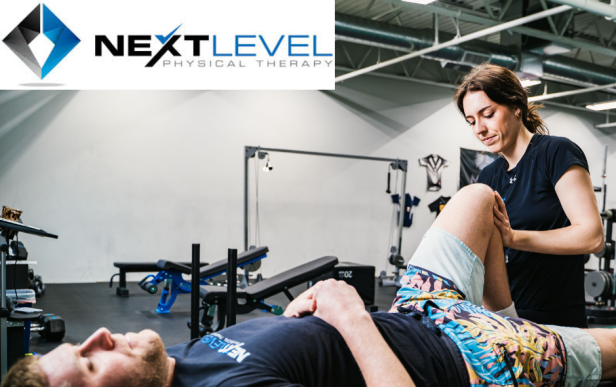Do you ever feel a tingling sensation that starts at the base of your spine and goes down the backs of your legs? It can also get pretty painful, right?
This is sciatica.
Sciatica is a common yet debilitating condition that affects millions of people worldwide. Up to 40% of people deal with sciatica pain at some point in their lives. Usually characterized by pain that radiates along the sciatic nerve, it can significantly impact daily activities and overall quality of life. If you’re struggling with sciatica pain, understanding its causes and learning some effective home exercises can help you find relief quicker than you may think.
What is Sciatica?
Sciatica is a condition that occurs when the sciatic nerve is irritated, compressed, or inflamed. It typically manifests as pain that travels from the lower back down through the buttocks and into one or both legs. This pain can vary in intensity, ranging from mild discomfort to severe, debilitating pain that makes walking or even sitting difficult.

Possible Causes of Sciatica:
- Herniated Disc: One of the most common causes of sciatica is a herniated or bulging disc in the lower spine, which can press against the sciatic nerve.
- Spinal Stenosis: Narrowing of the spinal canal can put pressure on the sciatic nerve, leading to pain and discomfort. According to the National Institute of Health (NIH), spinal stenosis affects an estimated 10-15% of the population over the age of 50.
- Piriformis Syndrome: A tight or inflamed piriformis muscle can irritate the sciatic nerve as it passes underneath.
- Degenerative Disc Disease: Age-related wear and tear on the spine can lead to disc degeneration, which may contribute to sciatica.
- Muscle Imbalances: Weak core muscles and tight hamstrings or hip flexors can place undue stress on the lower back and sciatic nerve.
*Looking for a physical therapist to help you with your sciatica pain? Speak with one of our client specialists today and learn how Next Level Physical Therapy can help YOU get pain-free!
What’s the Deal with the Sciatic Nerve?
The sciatic nerve is the longest and thickest nerve in the human body. It starts at the lower lumbar spine (L4-S3) and travels down through the buttocks and into each leg. This nerve plays a crucial role in movement and sensation in the lower extremities.
Functions of the Sciatic Nerve:
- Provides motor function to the muscles of the lower leg, including the hamstrings, calves, and foot muscles.
- Enables sensation in the lower back, buttocks, legs, and feet.
- Helps with reflex actions like knee-jerk and ankle reflexes.
Since the sciatic nerve runs through several different parts of your body, any compression or irritation can result in severe pain and functional limitations.
12 Home Exercises for Sciatica Pain Relief
Doing targeted exercises at home can alleviate sciatica pain by improving mobility, reducing nerve tension, and strengthening supportive muscles.
Here are 12 effective home exercises that can help with sciatica pain relief:
1. Sciatic Nerve Flossing
Sciatic nerve flossing helps to improve the mobility of the sciatic nerve by gently gliding it through the surrounding structures.
- Sit upright on a chair with both feet flat on the floor.
- Extend the affected leg straight and point your toes upward while tilting your head back.
- Slowly lower your leg and flex your head forward.
- Repeat 10 times on each side.
2. Seated Sciatic Nerve Flossing
- Sit at the edge of a chair with one foot on the ground and the other extended straight.
- Flex and extend your foot while tilting your head forward and backward.
- Repeat 10 times per leg.
3. Prone Elbow Rested Position
- Lie face down and rest on your elbows, keeping your hips in contact with the floor.
- Hold this position for 30 seconds to 1 minute.
- This helps to reduce pressure on the lower spine and sciatic nerve.
4. Prone Press-Up
- Lie face down and place your hands under your shoulders.
- Press your upper body up while keeping your hips on the ground.
- Hold for 10 seconds and return to the starting position.
- Perform 10 repetitions.
5. Frog Leg Press-Up
- Start in the prone position on your belly.
- Place your hands under your shoulders and press up while slightly spreading your knees apart.
- Hold for 10 seconds and repeat 10 times.
6. Press-Ups with Hip Shift
- Perform a standard press-up but shift your hips slightly to one side.
- Hold for 5 seconds, then switch sides.
- Do 10 repetitions per side.
7. Lumbar Side Glide
- Stand with your affected side next to a wall.
- Place your elbow against the wall and gently press your hips away.
- Hold for 5-10 seconds and repeat 10 times.
8. Side-Lying Hip Lazy Roll
- Lie on your side with your knees slightly bent.
- Roll your top hip slightly forward, then return to the starting position.
- Perform 10 repetitions per side.
9. Single Leg Bridge
- Lie on your back with one foot flat on the floor and the other leg extended.
- Push through your grounded foot and lift your hips.
- Hold for 5 seconds and repeat 10 times per leg.
10. Glute Foam Rolling
- Sit on a foam roller with one ankle crossed over the opposite knee.
- Roll gently back and forth for 30 seconds.
- Switch sides and repeat.
11. Piriformis Foam Rolling
- Sit on a foam roller and position it under one glute.
- Roll back and forth to release tension in the piriformis muscle.
- Spend 30 seconds per side.
12. Kickstand Romanian Deadlift (RDL)
- Stand with one foot slightly behind the other for balance.
- Hinge at the hips while keeping a neutral spine.
- Lower until you feel a stretch in the hamstrings, then return to standing.
- Perform 10 repetitions per leg.
Join our Facebook page to watch our Physical Therapist, Dr. Rich, explain these exercises in detail!
Don’t Let Sciatica Pain Hold You Back
Sciatica pain can be frustrating, but incorporating targeted exercises such as sciatic nerve flossing, foam rolling, and glute strengthening can significantly alleviate symptoms. If your pain persists or worsens, don’t hesitate to seek professional medical advice. By staying active and maintaining proper spinal health, you can keep sciatica pain at bay and enjoy a pain-free lifestyle.
FAQ
How is sciatica pain treated?
Sciatica pain is usually treated by a combination of approaches, including physical therapy, medications, and in some cases, injections or surgery, with the goal of reducing pain and improving mobility. Speak with your doctor to determine the best course of action for you.
Will sciatica pain go away?
For many people, sciatica pain improves within a few weeks with proper care, including rest, stretching, and strengthening exercises. However, if left untreated or caused by more serious conditions like a herniated disc or spinal stenosis, it can persist for months or even become chronic.
Does Next Level Physical Therapy treat sciatica pain?
Yes! We help you get to the root cause of your pain so you can begin your journey to recovery while also giving you the tools to avoid future sciatica pain, setting you up for success in your active lifestyle. Speak with one of our Client Specialists today to begin your pain-free journey.





